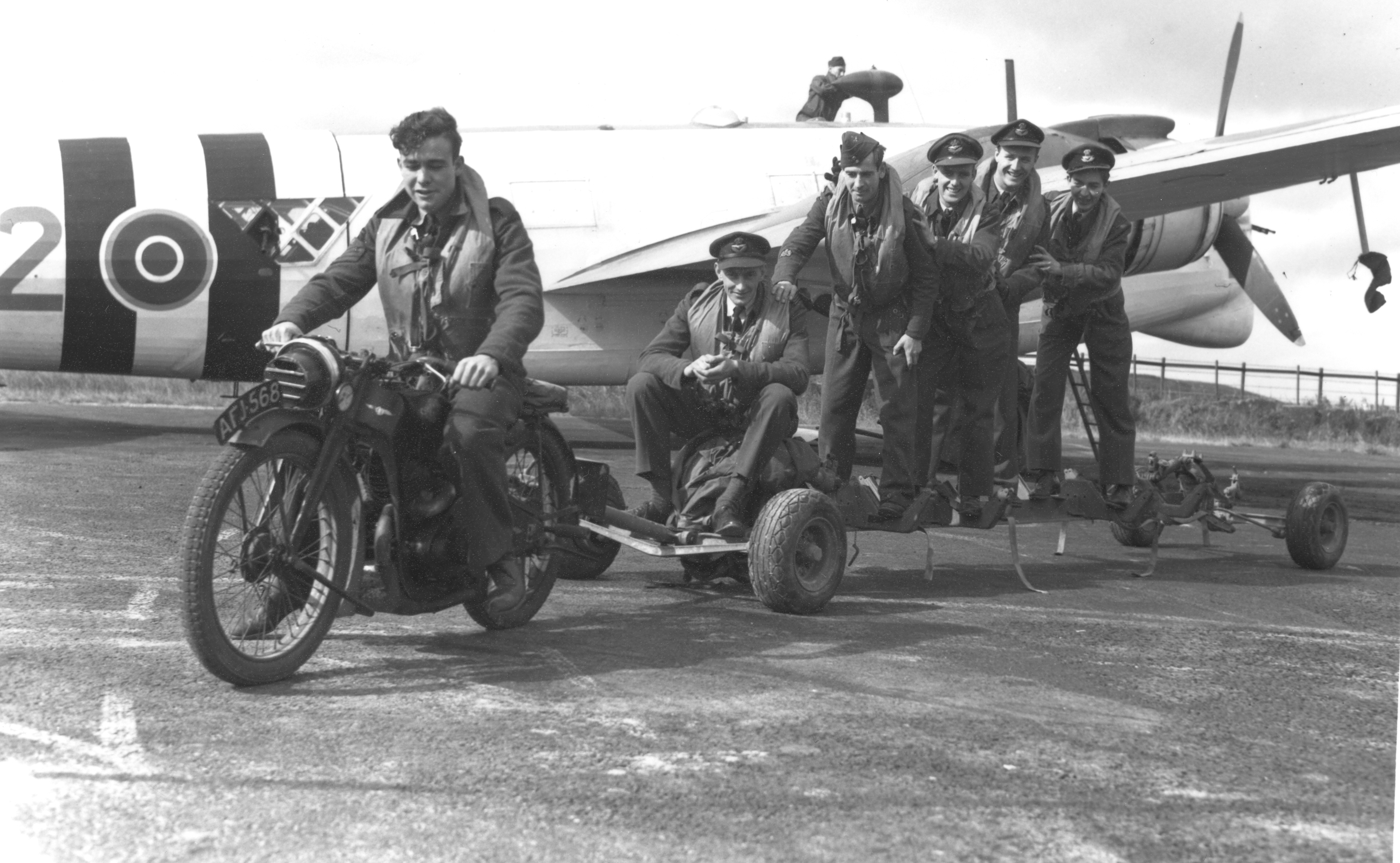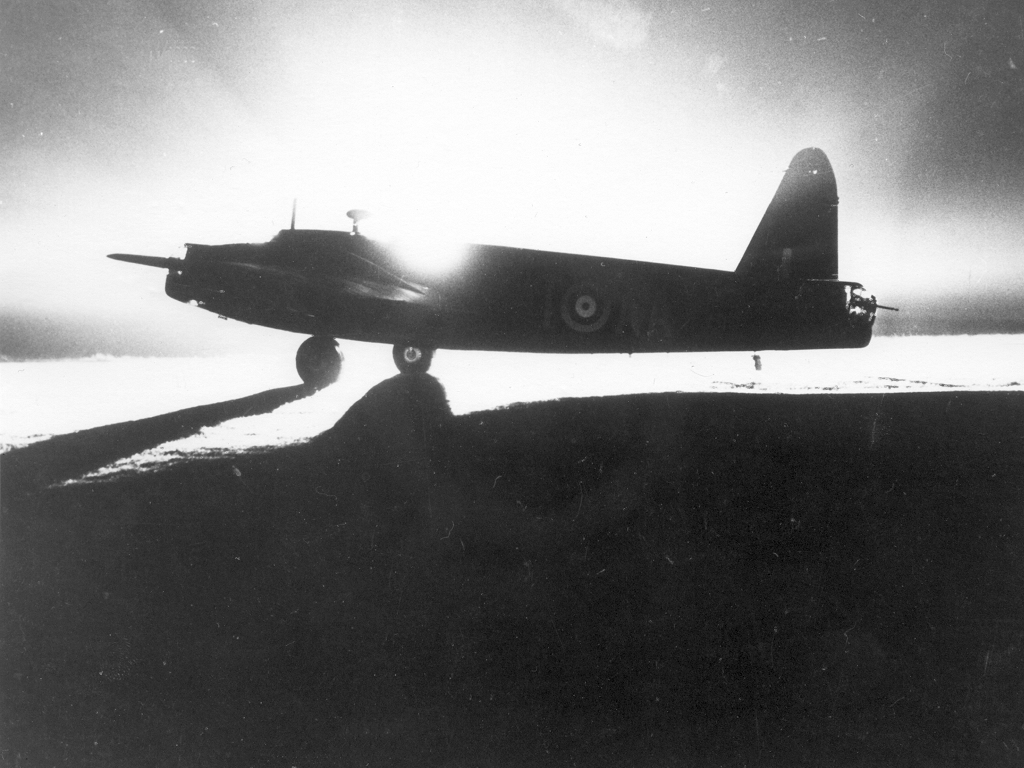Vickers Wellington

Overview
Overview
The Vickers Wellington, affectionately known as the “Wimpy” (after J. Wellington Wimpy, Popeye's hamburger-loving cartoon friend), was armed with twin .303 in (7.7 mm) machine guns in the nose and tail turrets. It also had two manually operated .303 guns in the beam positions and could carry a 4,500 lb (2,041 kg) bomb load. Its slow speed, limited ceiling, and a small bomb load soon made the Wellington obsolete, although one significant design advantage was famed designer, Sir Barnes-Wallace's geodesic latticework fuselage construction. This made the Wimpy extremely tough, and it often survived battle damage that would have destroyed other aircraft. Its other nickname, “The Flying Cigar”, alluded to the shape of the fuselage as seen from the profile perspective.
After having early on proved the inadequacy of the turret firepower in fending off attacking fighters during daylight attacks, the Wellington went on to build a great reputation for reliability and ruggedness in night bombing operations. In April 1941, they were the first to drop the deadly "block-buster" bomb, during a raid on Emden, Germany, and they helped to initiate the Pathfinder target-indicating tactics. No Wellingtons were “officially” on RCAF strength during the war although eleven RCAF bomber squadrons flew the aircraft in the European theatre from 1941 until 1944. A further two RCAF squadrons, Nos 407 and 415, flew Wellingtons on Coastal Command missions. 407 Squadron sank four U-boats with Leigh-light equipped Wellingtons.
| Model number | 415, 406, 417, 448, 455, 467 |
| Marks | IC, II, Ill, X, XII, XIII, XIV |
| Role | Bomber / Anti-submarine warfare patrol |
| Service | Royal Air Force |
|---|
Source: Canadian Combat and Support Aircraft: A Military Compendium by T.F.J. Leversedge © 2007. Translated and reproduced with permission of the author.
Technical specifications
Technical Specifications (Mk III)
| Manufacturer | Vickers Aircraft |
|---|---|
| Crew / passengers | Crew of eight |
| Powerplant | Two 1,130 hp Rolls Royce Merlin X piston engines |
| Maximum speed | 235 mph (378 km/h) |
| Service ceiling | 19,000 ft (5,791 m) |
| Range | 1,540 mi (2,478 km) |
| Empty weight | 18,650 lbs (8,459 kg) |
| Maximum take−off weight | 29,500 lbs (13,381 kg) |
| Span | 86 ft 2 in (26.26 m) |
| Length | 60 ft 10 in (18.54 m) |
| Height | 17 ft 5 in (5.31 m) |
| Wing area | 840 sq ft (78.04 sq m) |
| Armament | Eight .303 in (7.7 mm) machine guns in powered turrets or fixed positions plus provisions for up to 4,500 lbs (2,041kg) in bombs or depth charges |
Source: Canadian Combat and Support Aircraft: A Military Compendium by T.F.J. Leversedge © 2007. Translated and reproduced with permission of the author.


